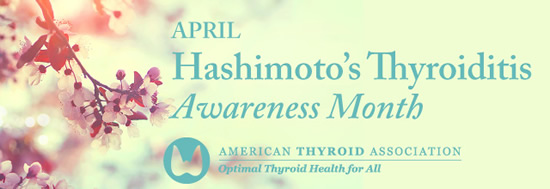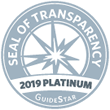
Clinical Thyroidology for the Public summarizes selected research studies discussed in the previous month’s issue of Clinical Thyroidology, an official publication of the American Thyroid Association. Editor-in-chief, Alan Farwell, MD, FACE
Available in pdf format for saving and printing and Web page format for viewing online
PDF Format for Saving and Printing
Clinical Thyroidology for the Public Volume 15 Issue 4 (PDF file, 2.56 MB)
TABLE OF CONTENTS – Web Format
HYPOTHYROIDISM
Association of hypothyroidism with depression may depend on the severity of hypothyroidism and stronger in women
There is a very complex association between hypothyroidism and depression. However, most hypothyroid patients do not develop depression and the majority of people with depression do not have hypothyroidism. This study aimed to investigate the existence and extent of an association between hypothyroidism, thyroid autoimmunity and clinical depression.
Bode H et al 2021 Association of hypothyroidism and clinical depression: A systematic review and meta-analysis. JAMA Psychiatry 78:1375–1383. PMID: 34524390.
THYROID AND WEIGHT
Is obesity is associated with increased fat cells in the thyroid?
Obesity has been associated with hypothyroidism and thyroid nodules. One possible link is inflammation, which is present in these disorders. This study evaluated thyroid tissue from normal- weight, overweight, and obese individuals to assess potential differences in inflammation that might contribute to altered thyroid function in obesity.
Basolo A et al 2021 Histological pattern and gene expression profiling of thyroid tissue in subjects with obesity. J Endocrinol Invest. Epub 2021 Aug 15. PMID: 34392500.
THYROID CANCER
Ultrasound appearance does not improve thyroid cancer risk predicted by molecular testing
Ultrasound of the thyroid is very useful in evaluating thyroid nodules to determine which need to be biopsied. If a biopsy is indeterminate, molecular tests can help identify those nodules that are benign and thus do not need surgery. This study examines whether combining results of molecular testing with ultrasound characteristics could improve the accuracy of risk stratification of indeterminate thyroid nodules even more than is currently achieved through molecular testing or ultrasound alone.
Figge JJ et al. 2021 Do ultrasound patterns and clinical parameters inform the probability of thyroid cancer predicted by molecular testing in nodules with indeterminate cytology? Thyroid. Epub 2021 Sep 1. PMID: 34340592.
THYROID NODULES
The role of a computer-aided diagnosis system in the interpretation of thyroid nodules with challenging ultrasound features
Thyroid ultrasound is the best initial study to determine whether a nodule is a cancer. The use of CAD systems based on machine learning has emerged as a possible solution standardize the risk stratification of thyroid nodules based on ultrasound appearance. This small study aimed to evaluate the diagnostic accuracy of a CAD system in the evaluation of thyroid nodules deemed difficult by clinicians.
Reverter JL et al 2022 Reliability of a computer-aided system in the evaluation of indeterminate ultrasound images of thyroid nodules. Eur Thyroid J 11(1):e210023. PMID: 34981749
THYROID CANCER
The role of thyroglobulin testing in identifying cancer return after lobectomy
Monitoring for thyroid cancer recurrence in patients that had a lobectomy can be challenging. The goal of this study is to determine if there is a particular thyroglobulin and/or thyroglobulin antibody blood level, or rise in these levels over time, that can correctly predict thyroid cancer recurrence.
Siyuan Xu et al 2021 Predictive value of serum thyroglobulin for structural recurrence following lobectomy for papillary thyroid carcinoma. Thyroid 31:1391–1399.
THYROID CANCER
A 4-day preparation with a low-iodine diet may be enough before radioactive iodine therapy for thyroid cancer treatment
For some patients, radioactive iodine therapy is an option to decrease risk of recurrence. To make radioactive iodine therapy more effective, ATA guidelines recommend patients go on a low iodine diet for 1-2 weeks before treatment. Urinary iodine excretion (UIE) rate is commonly used to assess iodine status after LID. This study compared the UIE rates at 4 days and at 7 days after starting LID to determine the best duration of a LID before radioactive iodine therapy for thyroid cancer.
Dekker BL et al 2022 Low-iodine diet of 4 days is sufficient preparation for 131I therapy in differentiated thyroid cancer patients. J Clin Endocrinol Metab 107(2):e604–e611. PMID: 34534327.



